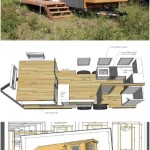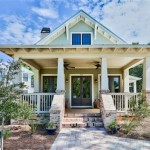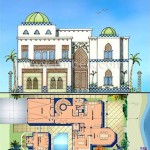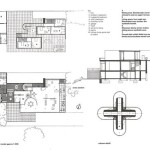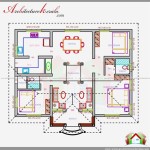Log Cabin House Plans: A Guide to Rustic Living
Log cabin house plans evoke a sense of rustic charm and connection with nature. Whether envisioning a cozy weekend retreat or a permanent residence, careful consideration of various factors is essential for a successful project. This article explores key aspects of log cabin house plans, offering guidance for those embarking on this unique building journey.
Choosing the Right Log Cabin Plan
Selecting the perfect log cabin plan requires an assessment of individual needs and preferences. Size, layout, and style are crucial considerations. A small, single-story cabin may suffice for a vacation home, while a larger, multi-story design might be necessary for a family dwelling. Floor plans should reflect the intended use of the space, with designated areas for living, dining, sleeping, and other activities. Architectural styles range from traditional to contemporary, influencing the overall aesthetic of the cabin.
Log Material Selection and Sourcing
The choice of log material significantly impacts the cabin's appearance, durability, and maintenance requirements. Common options include cedar, pine, and fir. Each species possesses unique characteristics regarding insect resistance, rot resistance, and insulation properties. Sourcing logs from a reputable supplier ensures quality and sustainability. Factors such as log diameter, length, and drying method should be considered when selecting materials.
Foundation and Construction Considerations
A solid foundation is crucial for the structural integrity of a log cabin. The type of foundation depends on the cabin's size, weight, and the soil conditions of the building site. Common foundation types include full basements, crawl spaces, and concrete slabs. Proper construction techniques are essential for ensuring the longevity and stability of the log structure. Experienced log builders possess the expertise to assemble the logs correctly and address potential challenges related to settling and expansion.
Understanding Building Codes and Regulations
Compliance with local building codes and regulations is mandatory when constructing a log cabin. These codes dictate specific requirements for structural integrity, fire safety, and energy efficiency. Obtaining the necessary permits and inspections ensures the cabin meets safety standards and avoids potential legal issues. Consulting with local authorities and experienced builders helps navigate the permitting process and ensures compliance.
Roofing and Insulation for Log Cabins
The roof of a log cabin plays a vital role in protecting the structure from the elements. Durable roofing materials such as metal, asphalt shingles, or cedar shakes are common choices. Proper insulation is crucial for maintaining a comfortable indoor temperature and minimizing energy consumption. Insulation options include spray foam, fiberglass batts, and rigid foam boards. Effective insulation helps regulate temperature fluctuations and reduces heating and cooling costs.
Windows and Doors for Rustic Charm
Windows and doors contribute significantly to the aesthetic appeal and functionality of a log cabin. Choosing energy-efficient windows and doors helps minimize heat loss and gain. Double-paned or triple-paned windows with low-E coatings improve insulation performance. Solid wood doors with weather stripping provide enhanced security and weather resistance. The style and placement of windows and doors should complement the overall design of the cabin.
Interior Finishing and Design
The interior finishing of a log cabin offers opportunities to personalize the space and create a cozy atmosphere. Wood paneling, exposed beams, and natural stone accents enhance the rustic aesthetic. Flooring options include hardwood, tile, or stone, depending on personal preference and practicality. Careful consideration of lighting fixtures, furniture, and décor contributes to the overall ambiance of the cabin.
Maintenance and Preservation of Log Homes
Regular maintenance is essential for preserving the beauty and longevity of a log cabin. Protecting the logs from moisture, insects, and UV damage requires periodic treatments with sealants and stains. Inspecting the cabin for signs of damage, such as cracks or rot, allows for timely repairs and prevents further deterioration. Proper maintenance practices ensure the cabin remains structurally sound and visually appealing for years to come.
Budgeting and Cost Considerations
Developing a realistic budget is crucial when planning a log cabin project. The cost of materials, labor, and permits can vary significantly depending on the cabin's size, complexity, and location. Obtaining detailed estimates from builders and suppliers allows for accurate budgeting. Exploring financing options and securing pre-approval for a construction loan streamlines the building process. Careful planning and budgeting help manage costs and avoid financial surprises.

Log Home Floor Plans Cabin

10 Bedroom Log Cabin Floor Plans Ideas House Home

Log Cabin Floor Plans Many To Choose From

Log Cabin Home Floor Plans The Original Homes

Cabin Floor Plan Log Home Plans Living House

Log Home And Cabin Floor Plans Custom Handcrafted Homes Us Europe

Log Home Floor Plans

Log Home Floor Plans Cabin

Small Log Homes Kits Southland

Taylor Log Cabin Floor Plans Small

